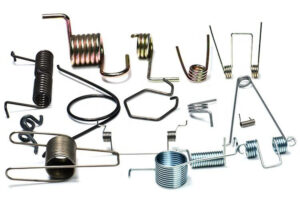Discovering the Secret of Finding Maximum Compression of a Spring
 As physics students, we all know the importance of understanding the behavior of springs. They are used in everyday life, from car suspensions to toys. However, one question that often arises is how to find the maximum compression of a spring. In this article, we will explore the secret to understanding this phenomenon.
As physics students, we all know the importance of understanding the behavior of springs. They are used in everyday life, from car suspensions to toys. However, one question that often arises is how to find the maximum compression of a spring. In this article, we will explore the secret to understanding this phenomenon.
Understanding the Basics
Before we dive into the mechanics of finding maximum compression, let us first understand the basics. Springs are elastic objects that store energy when compressed or stretched. The amount of energy stored depends on the amount of deformation, which is directly proportional to the force applied.
The maximum compression of a spring is the point where it cannot be compressed any further without causing permanent damage or deformation. This is known as the elastic limit. Beyond this point, the spring will not return to its original shape or size.
The Formula
To find the maximum compression of a spring, we need to use a formula. The formula is as follows:
x = (F * L) / k
Where x is the maximum compression, F is the force applied, L is the length of the spring, and k is the spring constant.
The spring constant is a measure of the stiffness of the spring and can be found by dividing the force applied by the amount of deformation. The unit of spring constant is N/m (Newtons per meter).
Practical Application
Let us demonstrate the practical application of the formula. Suppose we have a spring with a spring constant of 20 N/m and a length of 0.5 meters. We want to find the maximum compression of the spring when a force of 50 N is applied.
Using the formula, we get:
x = (F * L) / k
x = (50 * 0.5) / 20
x = 1.25 meters
Therefore, the maximum compression of the spring is 1.25 meters.
It is important to note that this formula only applies to ideal springs, which have a linear relationship between force and deformation. In real-life situations, the relationship may not be linear, and other factors such as friction and air resistance may affect the results.
In Conclusion
In conclusion, finding the maximum compression of a spring requires an understanding of the basics and the use of a simple formula. It is essential to note that this formula only applies to ideal springs and may not be accurate in real-life situations. As physics students, it is our responsibility to understand the behavior of springs and apply our knowledge in practical situations.






